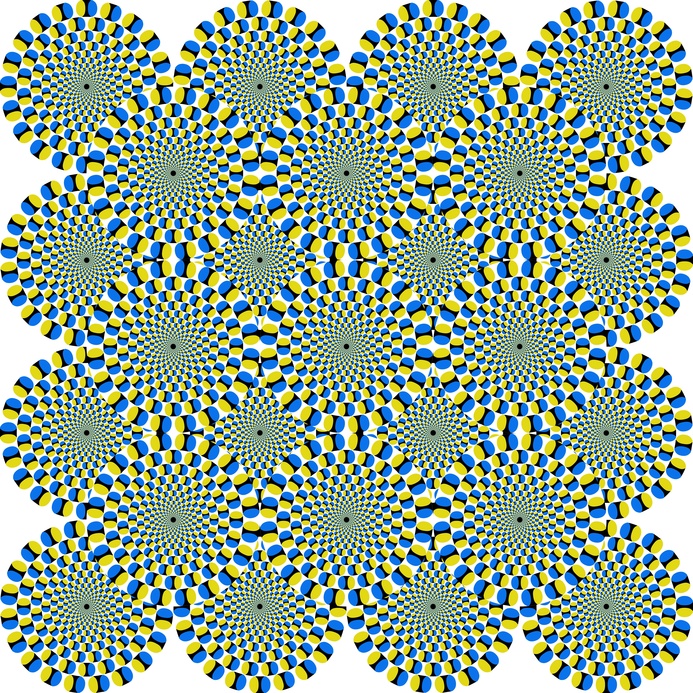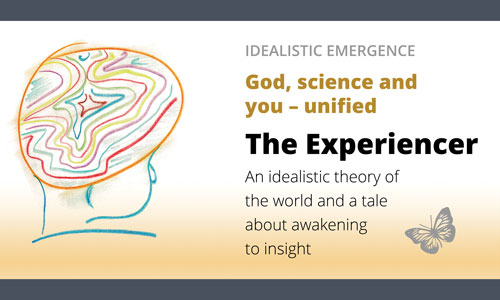The pattern is static, I said in point 6.
How can we then experience the exact opposite, namely that everything is in motion?
The reason is that space (distance) and time are already part of your primary world experience. These were the first two experiences and are included in all later interpretations and experiences.
This mental outspread of things in space and time is interpreted and experienced as movement. It takes some explanation to understand that it has to be so, but you can try it here and now, provided you are reading on screen, not on paper.
This image shows a static pattern. Now let your gaze slide from left to right or around the image. You will probably experience that it comes alive and that the round figures rotate a little.

Now focus instead firmly on the point in the middle of the image. Keep your gaze rigidly fixed. Then you will, hopefully, experience that the pattern stands still.
It is your movement of focus that creates movement, experiences movement that does not exist!
The picture above is a party game, but it reveals a fundamental mechanism in the universe: movement is an illusion that can arise from something static. Do not take the example too literally; it just shows that it is possible.
The notion and experience of motion arose as one of the very first – immediately after the first distance and then time was conceptualised and experienced. Motion is distance over time.
Thus, movement is an emergent conception like anything else, but this conception came so early that it is included in all later interpretations, as space and time are.
We now have a mental universe, a wildly complex conception of everything known and unknown, experienced as being in constant motion.
From motion come the emerging notions of gravity, mass, particles and everything else. That is described in two key chapters, the first dealing with
the principles, and the second with how these principles can explain
the creation of the universe.
I try to show that the theory of «idealistic emergence», i.e. the one I present here, corresponds to what physics tells us.
The next step is understanding how motion affects our further experience of the universe – now that the basic things are in place.

